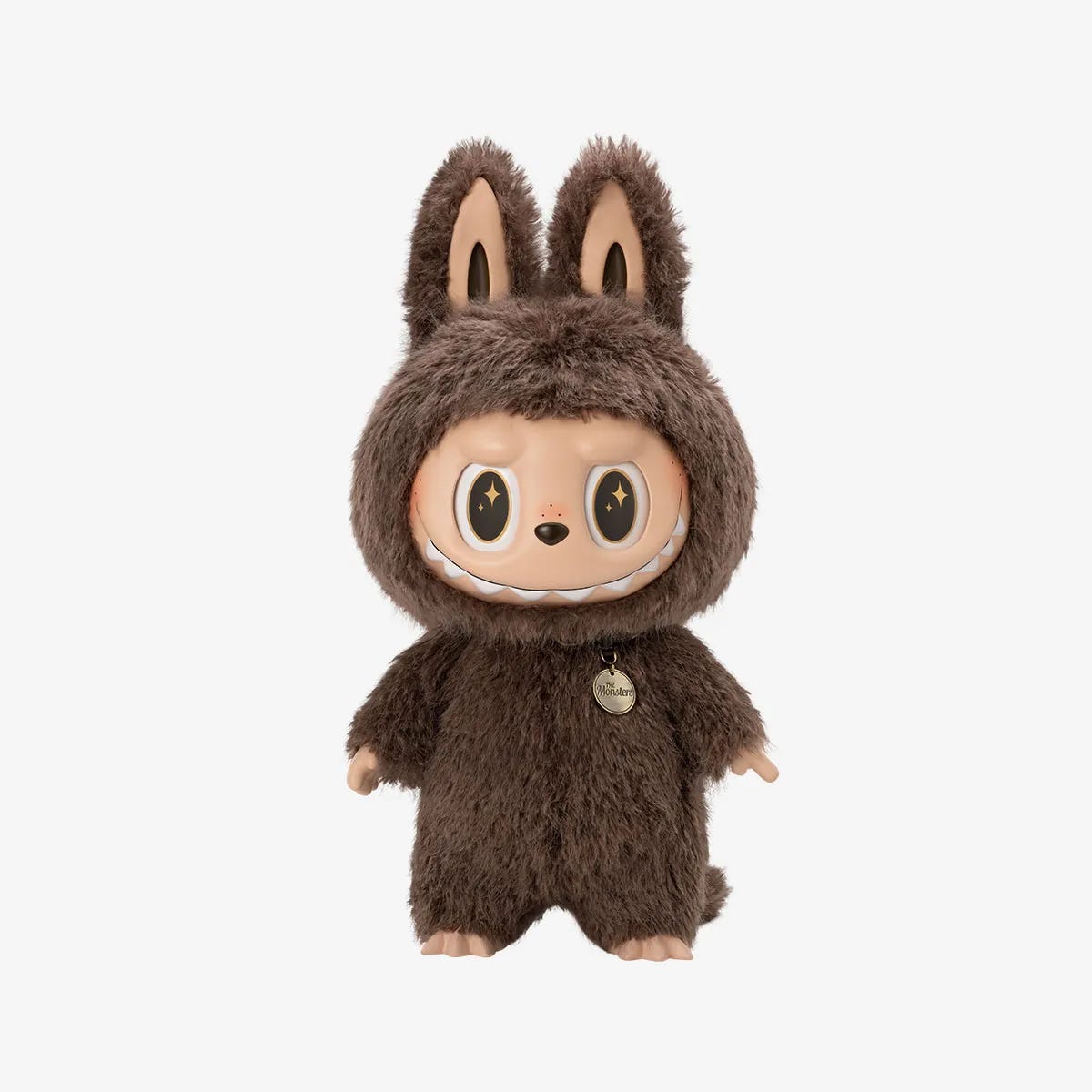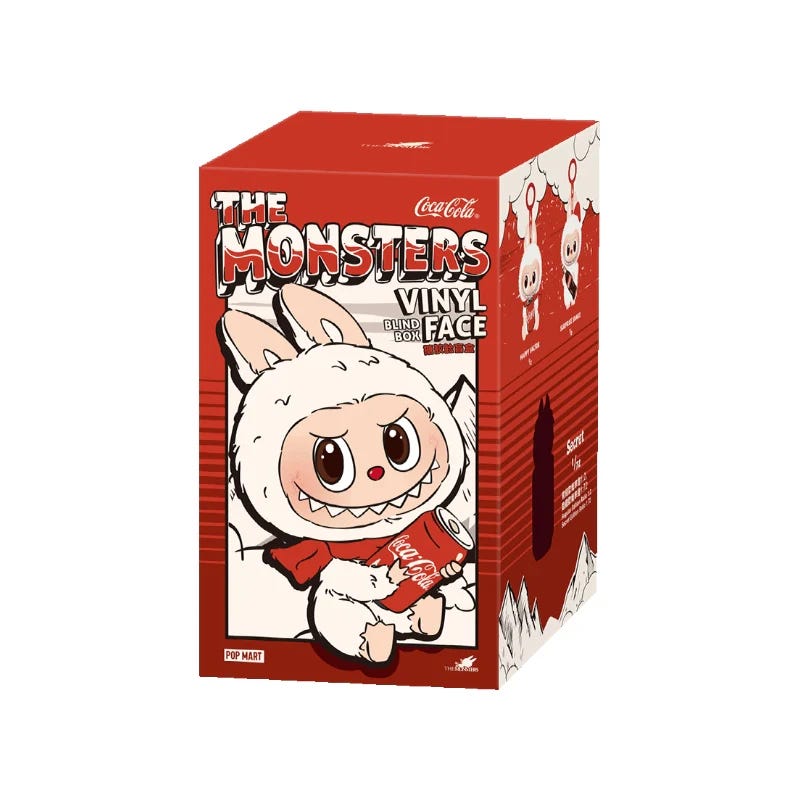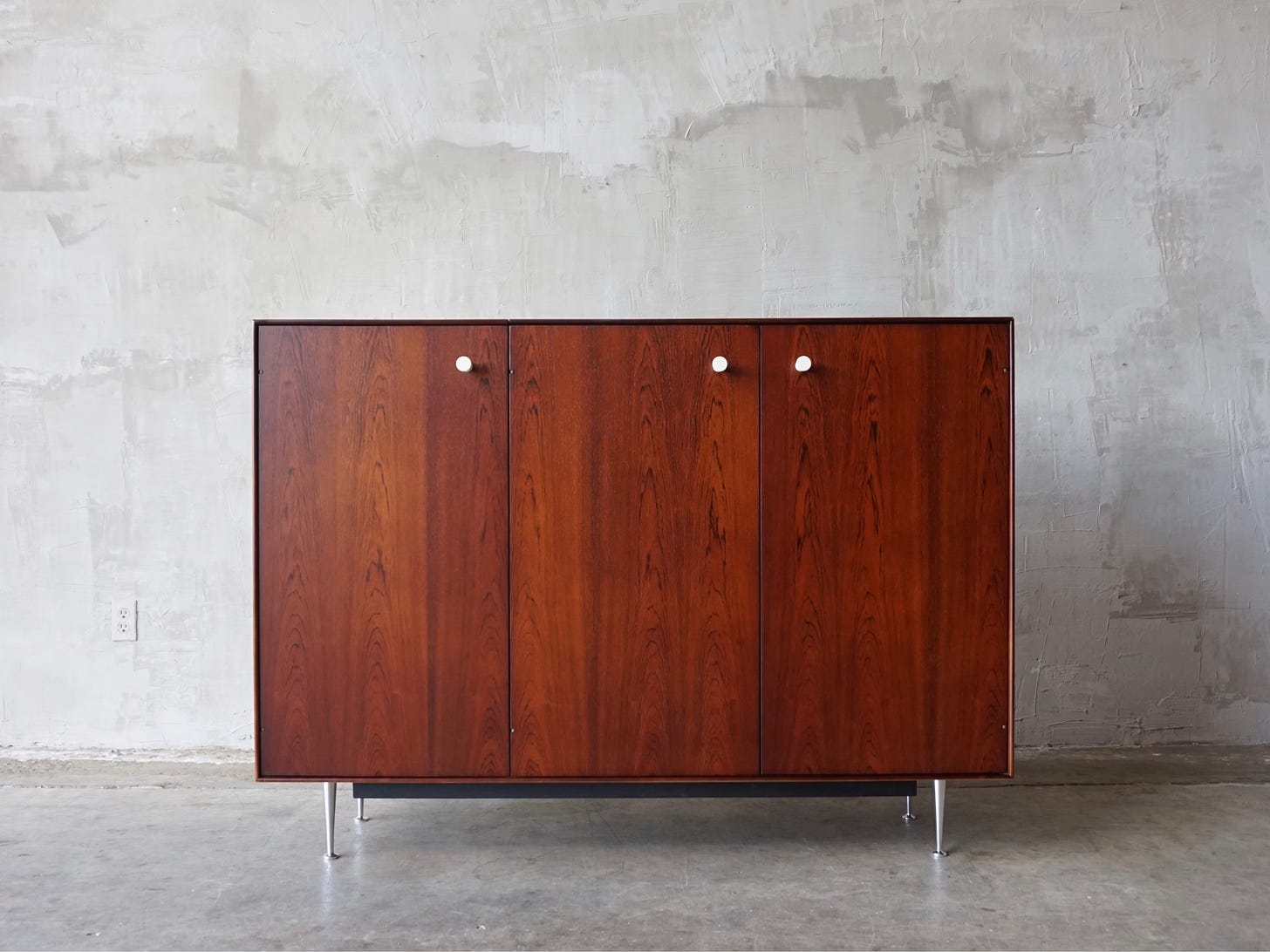#162 Hidden design
Labubu dolls and a mid-century design icon 🔒
Happy Monday!
Design Lobster is back and this week we’re in a stealthy mood. We’re unpacking the design secrets that have made Labubu dolls the viral sensation of 2025 and are admiring a mid-century design icon by George Nelson with some secrets of its own 👀
Question: What has made Labubu dolls such a viral sensation?
These mildly terrifying-looking rabbit-like dolls recently entered my consciousness via an obsessed niece, precipitating a spiraling internet rabbit hole to understand why this product has caught the imagination of millions, with $418 million of sales in the first half of 2025 alone.
For those of you not yet acquainted, Labubu is a mischievous, rabbit-like character created by Hong Kong artist Kasing Lung, first introduced in his illustrated stories before being brought to life in 2019 as a vinyl toy by Chinese toy conglomerate Pop Mart. Labubu figures are released as part of themed series, each featuring multiple character variations—from seasonal costumes to fantastical creatures—rendered in the character’s signature wide-eyed, toothsome style.
Central to Labubu’s appeal is its so-called ‘blind box' packaging. Each figure is sealed in an opaque, identically sized box, concealing which design the buyer will receive. Within a series, some figures are common, while others are produced in much lower quantities, making them highly sought after. This scarcity, combined with the ritual of unboxing, transforms every purchase into an addictive game of chance.
For good or ill, this combination of surprise and our impulsive human tendency to want completed sets of things has inspired customer obsession that has ocasisoanlly tipped into outright frenzy. Rare dolls command astonishing prices on reselling sites and as recently as last week a dramatic heist in LA resulted in the theft of $7,000 worth of dolls from a reseller.
For my part I can’t help but see so many of these unhinged faces staring demonically but sadly out of landfills in a few years time. But I still can’t quite quell the temptation to get one box, just to see which character I get… 🥶
Design takeaway: What details of your design could you withhold rather than reveal to keep people guessing?
🐰Feel the excitement as this child opens their Labubu box!
Enjoying Design Lobster? Share it with a friend, colleague or fellow designer 🤲🦞
Object: ‘Thin edge’cabinet
The Thin Edge furniture series, designed by George Nelson for Herman Miller, emerged in the late 1950s as the refined successor to his Basic Cabinet Series (1946). By 1958, Nelson had distilled a decade of experimentation into a collection defined by its hallmark slim veneer edges, light aluminum legs, and porcelain pulls—an aesthetic of restraint that concealed practical ingenuity.
The example pictured above opens up to reveal drawers, compartments and even an entire writing desk within the remarkably clean-edged design. There is something so satisfying about seeing something that seems simple harbouring secrets that you could not have guessed just by looking at it. Indeed in some designs in the series some of the compartments were genuinely secret, a smooth teak panel lifting up with the right push to reveal a place to keep things you did not want other people to see.
The cabinet lays bare the hidden purpose of so much 20th century furniture design as an attempt to hide away the torrent of possessions that mass production had unleashed upon society. An entirely new kind of design problem that mass affluence had created. As the Eame’s said (in an essay about the humble cupboard) the challenge was to bring things ‘to the right level of attention’. Whether we truly benefit from being protected from the reality of our ever-growing hoard of knick-knacks I leave you to decide.
Nevertheless I like the contradiction that a piece of Modernist design, ostensibly motivated by honesty and purity, is actually a veritable labyrinth of hidden parts.
Design takeaway: Where is the secret compartment in your design?
🥚 In Design Lobster #153 we looked at the history of hiding ‘Easter eggs’ in video games
Quote: “If you want to hide the treasure, put it in plain sight.”
– Larry Dossey, author and physician
Larry Dossey’s sometime controversial views on spiritual health are beyond the scope of this issue, but the nugget of wisdom in this quote felt especially relevant to this week’s theme.
Sometimes, the most special parts of a design don’t call attention to themselves. The real secret with the greatest design is that it all feels so obvious.
Have a great week,
Ben 🦞
Elsewhere…
Do it for the culture - a pithy manifesto from designer Andy Allen 💎
The product design talent crisis - I enjoyed this call to arms from designer Matthew Ström-Awn 💪
Some home truths from Julie Zhuo about hiring designers - I’ve been enjoying the discourse in the past couple weeks about how valuable great designers are on X 😊
Enjoyed this week’s Design Lobster? Let me know by clicking the heart button ❤️
👇







The story of the cabinet is lovely, thanks for sharing!